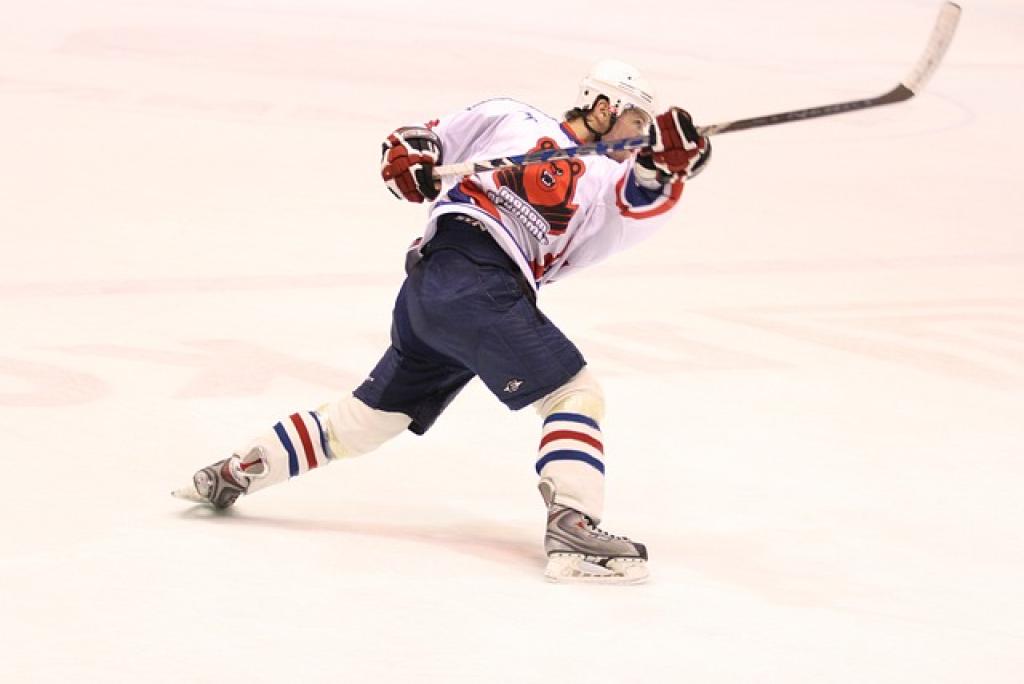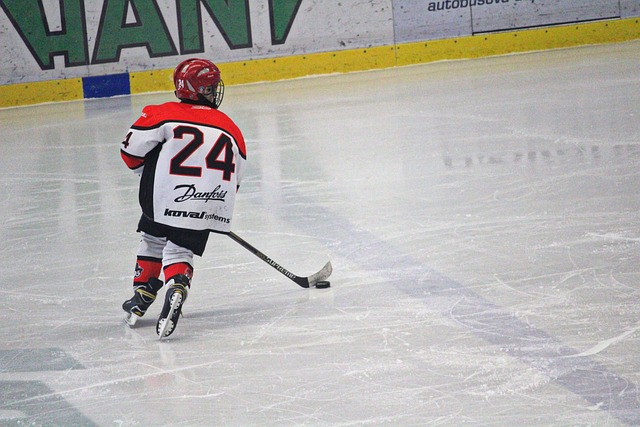Hockey is a thrilling blend of speed, strategy, and skill, but its unique rules often leave even dedicated fans scratching their heads. Among these, “offside” and “icing” frequently top the list of most misunderstood terms. Ever found yourself in the stands or on the couch, wondering why play just stopped when the puck seemed to be on an exciting breakaway? You’re not alone.
These rules might seem like a complex puzzle, but they’re crucial for maintaining fairness and flow in the game. Understanding them can elevate your enjoyment and appreciation of hockey to a whole new level.
Offside and icing aren’t just rules—they’re the heartbeat of the game, influencing strategies and outcomes. Dive in with me as we unravel these essential elements of hockey, making sure the next time you watch a game, you’re right there in the action, nodding in agreement instead of bewilderment. Get ready to transform the chaos into clarity!
What is Offside in Hockey?
Let’s start with offside—one of the most talked-about rules in hockey. Imagine you’re gearing up for your favorite team, eyes glued to the player speeding towards the opponent’s zone. Suddenly, you hear a whistle, and play stops. What just happened? The dreaded offside call!
At its core, offside is about player positioning relative to the blue line and the puck. A player is considered offside if they cross the opponent’s blue line before the puck does. It aims to prevent unfair advantages by stopping players from camping out near the opponent’s net, waiting for an easy pass to score a goal.
This rule keeps the action fair and exciting, demanding precise timing and strategy. Players must be highly aware of their position on the ice and constantly coordinate with teammates. Offside calls are common, especially during fast-paced breaks, so paying attention to every play is vital.
Mastering the offside rule adds a layer of understanding to the game’s strategic depth, enhancing the thrill when players flawlessly execute entry into the offensive zone. Next time you’re watching a game, try predicting offside situations—it’s a fun way to stay engaged.
How is an Offside Violation Determined by Officials?
Determining an offside violation falls into the hands of the linesmen, who are like the ultimate referees for this rule. They skate along the blue line, eyes peeled, ensuring the play is clean. It’s a tough job requiring laser focus, especially with players zooming around at top speeds.
The Role of Instant Replay
Instant replay has become an important tool for officials, especially with the rapid pace of the game. If there’s any doubt about a close call, video review provides that extra layer of clarity. This helps make sure that the right call is made, which is crucial for maintaining fairness in such a fast-moving sport.
The key here is the position of the skates and the puck. The player’s skates need to be completely over the blue line before the puck for it to be offside. If even a sliver of their skate is touching the line, they’re onside. In those split-second moments, the linesmen must make quick judgments.
Calls can be challenged by coaches if they believe an error was made, adding another tactical layer to the game. These challenges can be pivotal, affecting momentum and game outcomes, which keeps both players and fans on their toes.

Why is Understanding Offside Crucial for Players and Fans?
Understanding offside is like knowing the secret language of hockey. For players, it’s all about strategy. Staying onside can be the difference between a successful play and a sudden whistle that halts your momentum. Players need to develop a sense of awareness, not just about where they are, but also where their teammates and opponents are on the ice.
For fans, a solid grasp of the offside rule makes the viewing experience much more enjoyable. Knowing why a play has stopped helps you follow the game more closely and appreciate the skill involved in executing clean passes and rushes. It transforms every close call into a suspenseful moment, making you feel like you’re part of the action.
Plus, when fans understand offside, they can engage more deeply with the game, discussing calls and tactics with friends or online communities. It fosters a shared knowledge that enriches the whole experience, turning casual viewers into informed supporters with a deeper connection to the sport.
Key Strategies to Avoid Offside Penalties in Gameplay
Staying onside is a vital skill that requires practice and awareness. One key strategy is communication. Players need to constantly talk to their teammates, giving and receiving cues about positioning. This helps the team to move as a cohesive unit, reducing the chance of straying offside.
Anticipation plays a big role too. Players should learn to read the game and anticipate where the play is heading. This involves understanding the dynamics of the opposing team’s defense and knowing when to hold back or push forward. It’s all about timing and intuition.
Maintaining Spatial Awareness
Spatial awareness is crucial. Players should always have a mental picture of where the blue line is and adjust their speed accordingly. Quick glances over the shoulder can also keep defenders in check, ensuring they don’t inadvertently step offside during fast breaks.
Practice drills focusing on timing and positioning can help players hone their ability to stay onside. Coaches often use specific drills to simulate game situations where players must make split-second decisions about crossing lines. By repeatedly practicing these scenarios, players become more adept at recognizing and avoiding potential offside situations in real games.
The Role of Icing in Hockey and Its Impact on Gameplay
Icing is one of those rules that can sneak up on teams if they’re not careful. Basically, it happens when a player shoots the puck across both the center red line and the opposing team’s goal line without it being touched. The play is stopped, and a face-off takes place in the defending zone of the team that iced the puck.
For teams, icing can be a double-edged sword. On one hand, a well-timed icing can relieve pressure by getting the puck out of a crowded zone. On the other hand, it leads to a face-off in their defensive zone, which could put them in a vulnerable position if the opposing team wins the face-off.
Preventing Icing with Smart Passing
To minimize the risk of icing, players are encouraged to use smart passing and look for opportunities to skate the puck out of danger instead of automatically dumping it down the ice. By staying in control, teams can avoid needless stoppages and maintain their offensive momentum.
Icing also affects the flow and tempo of a game. Frequent icing breaks the rhythm and can tire out defensive players who are stuck on the ice, unable to change lines. Coaches often strategize around this by making quick, strategic line changes whenever possible to ensure fresh legs and keep up the pressure.
How is Icing Enforced by Referees During a Game?
Referees play a crucial role in making the right calls on icing, ensuring the game is fair and flows smoothly. When the puck is sent all the way down the ice, refs keep their eyes peeled to see if any player could have touched it or if it’s heading past the goal line untouched.
As soon as the puck crosses the goal line and no opposing player has touched it, the referee will blow the whistle to signal icing. This quick reaction ensures the game stops immediately, and players reset for the face-off.
Key Considerations for Referees
But, it’s not all cut and dried; there are nuances. One key consideration is the “hybrid icing” rule. If it looks like a player from the team that didn’t ice the puck is likely to win the race to the puck, referees might waive off icing to keep the action moving. This calls for good judgment and clear communication among the officiating crew.
Referees also need to watch out for any errors or misconceptions. Sometimes, a puck that looks like it might be icing is actually deflected en route, in which case the play should continue without a whistle. It’s a game of speed, split-second decisions, and teamwork to make sure that only legitimate icings are called.
Comparing Offside and Icing Rules in Different Hockey Leagues
It’s super interesting to explore how different hockey leagues handle the offside and icing rules. While the basic concepts are pretty universal, the differences can have a big impact on how the game is played.
In the NHL, for example, the “hybrid icing” rule has become popular. This rule is designed to protect players from dangerous collisions near the boards, but it’s not always used elsewhere. Some leagues, especially in Europe, still use “touch icing,” which demands a player actually touch the puck for the icing call to be made, often resulting in fast-paced chases.
Offside rules also vary. The NHL introduced the “coach’s challenge” to dispute potential offside goals, adding a layer of strategy and drama. On the other hand, international leagues might focus more on the flow of the game and have fewer stoppages due to such challenges.
These variations mean watching games across different leagues can feel like a fresh experience every time, offering different flavors of this thrilling sport.
The Bottom Line: Mastering Offside and Icing for a Better Hockey Experience
Understanding the nuances of offside and icing rules can truly enhance your enjoyment of hockey. These rules may seem complicated at first glance, but once you get the hang of them, they add depth to the game.
For players, mastering these rules means better positioning and smarter plays. Anticipating an offside call or effectively managing an icing situation can give a team the edge they need. For fans, a solid grasp of these rules can make watching the game even more exciting. There’s nothing like witnessing a perfectly executed play that dances around these rules.
Interestingly, variations in rules across different leagues keep hockey fresh and engaging. Whether it’s the NHL’s hybrid icing or the touch icing in European leagues, these differences reflect the dynamic nature of the sport.
So, next time you’re watching or playing hockey, pay close attention to how offside and icing impact the flow of the game. With time, you’ll appreciate the role these rules play in creating a fast, strategic, and thrilling experience on the ice.
In conclusion, whether you’re a seasoned pro or a newbie fan, taking the time to learn about offside and icing will undoubtedly enrich your hockey journey. It’s these small details that make hockey such an exciting and beloved sport around the world. Embrace the complexity, and you’ll find yourself enjoying hockey on a whole new level.

